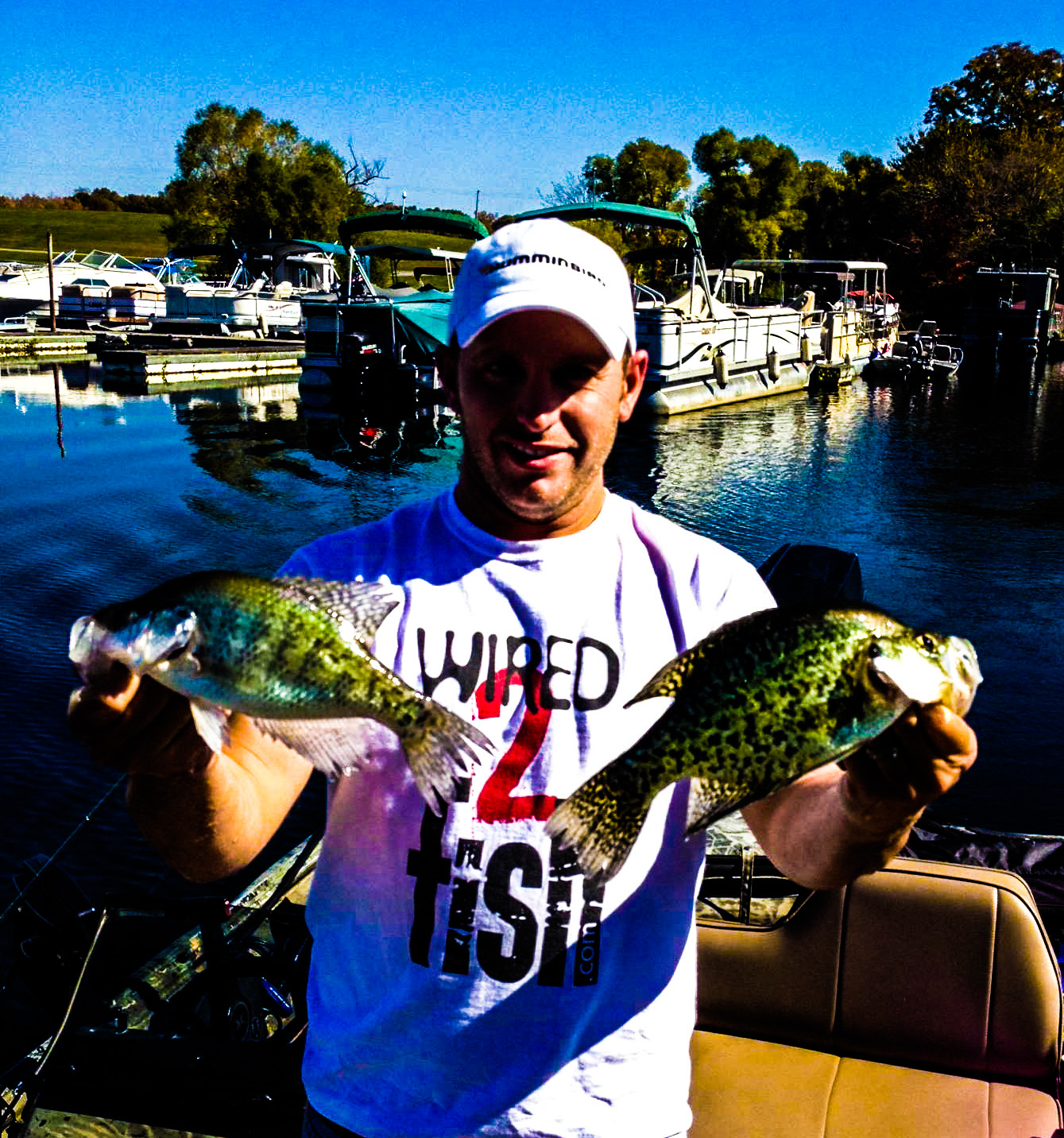Drop-shotting for Illini Slabs

PHOTO: Josh Gowan with a couple Lake Kinkaid, Illinois crappie
Oh sweet fall, how I adore thee! The leaves are a turnin’ my friends, and if there was anything I could do to accelerate the process I’d be on it. The crappie are biting at every lake in the Midwest right now, so if you’re not in a tree waiting on a big buck, get out there and go fishing!
Being that I will be afield and “awater” for the next three weekends, I was intent on spending every minute with my wife and son, and getting some real quality family time in the books. We watched movies, played some board games, and kicked the ball around in the yard, and by noon on Saturday I’d worn them out. Apparently my wife, who’s quite the detective, somehow noticed that I was going stir-crazy (possibly the exaggerated sighs and longing looks out the window, I can’t be sure). I tried to get them out of the house, but to no avail, and after the third time I read the weather for Sunday, she suggested that I should get out of her hair for a while in the morning, probably an “absence makes the heart grow fonder” sort of thing.
I managed to find someone else who was not only feeling as cooped up as me, but who also had a wife that was happily sending him off, my old fishing buddy and stepdad Perry Jackson. Our wives even made us sandwiches and packed our drinks!
We left Seabough’s Bait and Tackle in Jackson, Missouri at a little after 5am, and made the hour drive to Lake Kinkaid, Illinois well before the sun came up. We were trying a new tactic to catch our favorite panfish, drop-shotting for crappie. About a month ago I wrote an article for Wired2fish.com about this tactic, using professional fisherman and guide Kyle Schoenherr as a source, who fishes Kinkaid regularly, so we went back and read the piece as a refresher.
The drop-shot is much like a double-crappie rig, except the sinker (1/2-ounce) is on the bottom, with two light-wire crappie hooks on short leaders above it. The bottom hook is just 4 or 5-inches above the sinker, and the top hook is a few feet above it. Lake Kinkaid has phenomenal water quality and clarity, much like Norfolk Lake in Arkansas, which results in healthy crappie that spend most of their time in depths of at least 15-feet.
The idea is to drive around and find deep brush piles, which is a breeze with the Humminbird Side-Imaging Depthfinders, and throw a marker buoy on them. Then you pull up to the marker buoy with the trolling motor, and with a live minnow on each hook, drop your sinker to the bottom. We were fishing 25-foot deep, so a spinning reel on 10 or 11-foot jig poles were the ticket.
Here’s where it gets weird. Once your sinker is on the bottom, you start bouncing and swinging it around on the bottom until you get hung up, and then you fish. Getting intentionally hung up is out of the norm for most of us, but the idea is to drop that sinker down through the middle of a brush pile, and your hooks are always hanging on a limb. However with the sinker at the bottom, you can pick it up and drop it back down and get “unhung” very easily. You are in constant contact with the brush, and if you don’t feel anything, you’ve drifted off the brush and need to find it again.
Once we were in the brush, we were getting “THUMPED” fairly often, and managed a good mess of thick shouldered crappie by noon. After catching a few out of one spot, we’d ease on and find another one, and repeat the process. It was a blast and I can’t wait to do it again, as Kyle said the fishing only gets better as it gets colder.
If you’d like to read more about this and other methods, look up Wired2fish.com and click on the “CRAPPIE” tab, and for information on booking a trip with Kyle, go to allseasonscrappiefishing.com!
